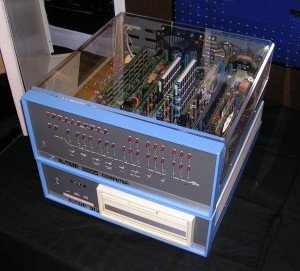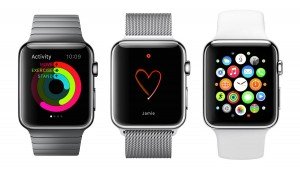A look at 4 decades of home computing, mobile phones, digital cameras and even YouTube…
“Why anyone would ever want to look at photos on a TV screen?” That was what bewildered company executives told the Kodak engineer who first proposed the idea of a ‘filmless camera’ to them in 1975. This concept was of course the first digital camera.
Thirty years later, I received a similar response from my contemporaries when I proposed a new approach to audio guides. Taken by my enthusiasm I was left to pursue the idea and develop the first downloadable audio trails in the UK. Until that time audio guides were limited to indoor locations and listened to on hired handsets/wands: In 2005 you could count the number of ‘audio trail’ Google search results on one hand – today there are nearly 60 million!
Fast-moving tech
Having set up Audio Trails in 2005 I was surprised at the level of opposition I was met with when I rather boldly stated that digital interpretation would play a big role in the coming years. Some of the ‘old guard’ were far from convinced about this new-fangled technology, and of course digital interpretation hasn’t been a magic wand; but it has been a valuable tool for engaging and informing visitors – when applied correctly.
Think twice
In those ‘early’ years everyone was keen to jump on the latest technology to ‘out-tech’ their competitors. It still happens today, but perhaps not with the same vigour. Everyone is a little more cautious about the technology they adopt. We’ve all seem too many bad applications of QR codes, Bluetooth and Augmented Reality. In many instances this was because the technology was still very much in its infancy, or because it was abused by those trying to make a ‘quick buck’.
Even today there are few good examples of Augmented Reality in the heritage world (we think this is a shining example though). However, this technology still something has great potential in allowing visitors to interact with former castles, forts etc in all their glory once more – albeit through a screen.
Bluetooth is also making a renaissance, in a new guise, and this time it is set to be a success – in no small part because Apple are backing it. Bluetooth LE serves as great tool to offer indoor GPS. Let’s hope the marketeers don’t abuse it by creating Beacons in every shop, pinging us adverts left, right and centre.

1975 – A vintage year?
History tells us that new ideas often take a little time to get off the ground. 1975 was a significant one for digital interpretation – albeit many years would pass before we would realise: 40 years ago Bill Gates founded Microsoft and developed a BASIC program for the Altair 8800 – the first marketable home PC. In this same year Motorolla obtained patents for the first portable mobile phone, and Sony’s Betamax and JVC’s VHS were also introduced. All this tech has come along way, particularly in the last 10 years.
What will we be wearing in the future?
As we look ahead it will be wearables that form the new ‘tech’ guard. Google Glass didn’t make quite the bang it had expected first time around and has gone away to re-invent itself. Apple Watch has now made its long-awaited appearance, but how long will it take to be effective in the heritage world? What we have learnt is that these things take time to find their feet.

So, what does the future hold for interpretation in all its forms? Perhaps 2015 is the year that a new toolbox of interpretation tools are being frowned on by executives and championed by enthusiastic newbies. Only time will tell.
This is a slightly edited version of the article Dan Boys wrote for the Association of Heritage Interpretation’s (AHI) Interpretation magazine, to celebrate the organisations 40th anniversary this year. Dan is AHI’s Digital Media correspondent.